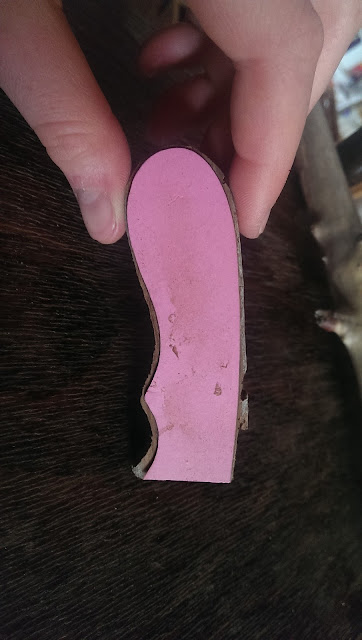I've always loved wood carving and whittling and have wanted to make a knife for myself to use for a long time. The light side of the knife (All pictures are of the same knife) is made from some Scottish drift (beech) wood I collected and the darker wood was taken from a beach I visited on Vancouver Island. (I spent a month volunteering on the island which is partly why there haven't been any posts recently!) Both hold a particular significance to me and so I decided to make something I would use and treasure for a long time to come.
Here is the Canadian driftwood! The lowest, darkest piece you see in the picture is the one I used to make the knife. (I don't have any pictures of the beech in its raw state unfortunately).
I started by sanding one side so it was completely flat.
Here is the driftwood sanded smooth and ready for the template of the knife handle to be drawn on.
I also sanded the beech wood flat.
The template just fits!
I tried drawing around the template, but the pencil marks didn't show up against the dark wood. Instead I glued the template on and cut around it with my hacksaw.
I didn't try and cut close to the edge of the template as this would have been pretty tricky to do (and not very accurate). It would also make the gluing process a lot harder.
Both pieces ready for gluing, I used 5 minuet epoxy to glue the pieces onto the tang. I would have liked to have used one with a longer drying time, but this was the only one I had at hand.
Unfortunately my phone broke after this point so I don't have any more pictures! Once both pieces of wood were glued onto the tang I used a knife and carved the wood until I had a general shape I was happy with. After this I switched to using sandpaper of various grits, starting with p60 and gradually just refined the shape.
I was also left with some gaps between the wood and the metal tang (mainly because the wood wasn't entirely flat). To fix this I sanded some of the left over wood (of both types) which gave me fine dust.
I then filled the gaps with the dust and used superglue to lock them in. I then sanded this down to remove the excess wood and glue.
Thanks for reading!















